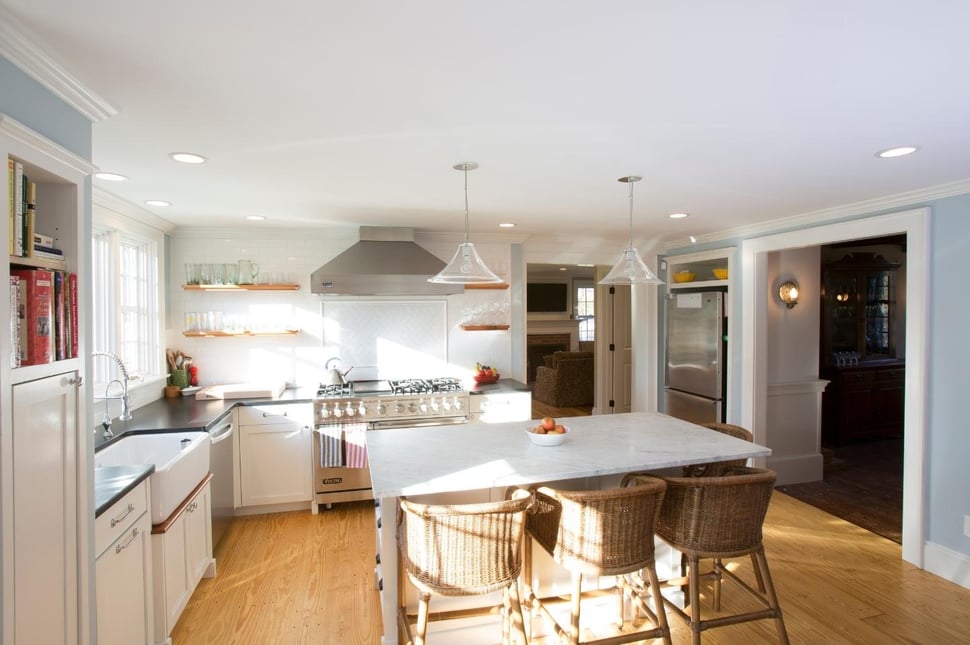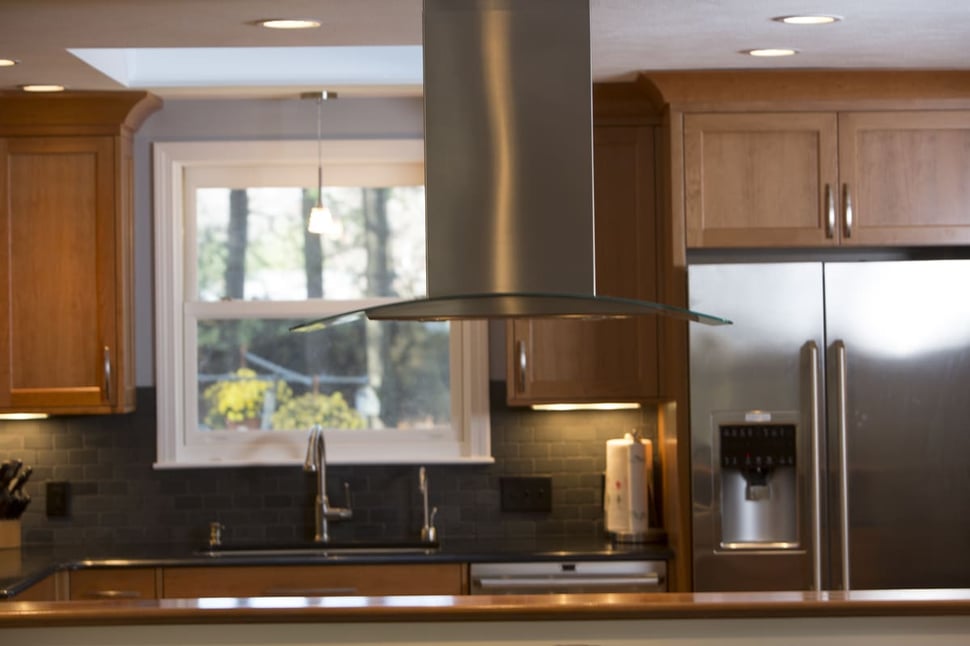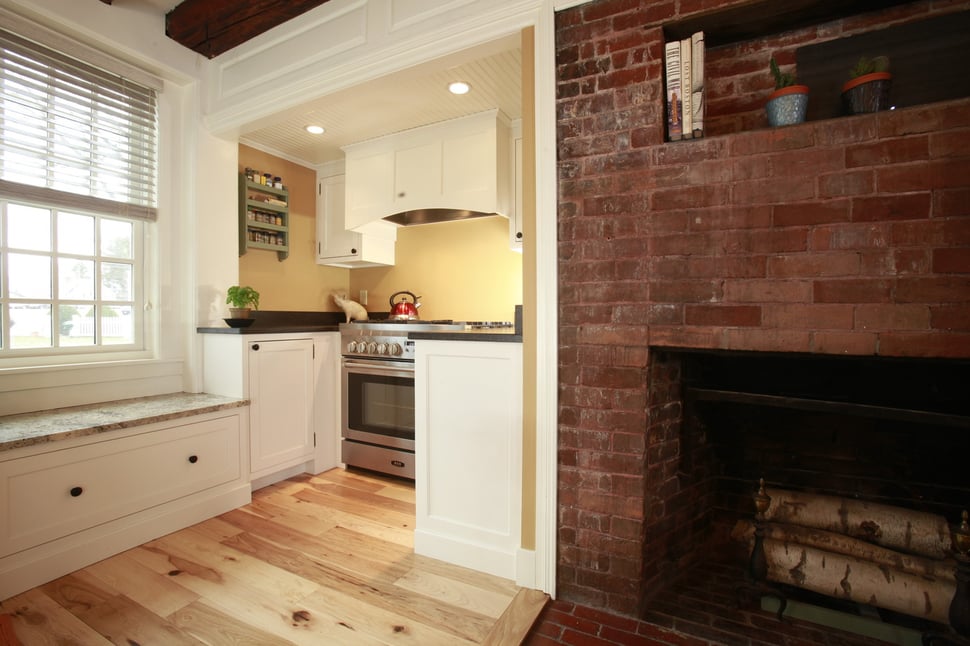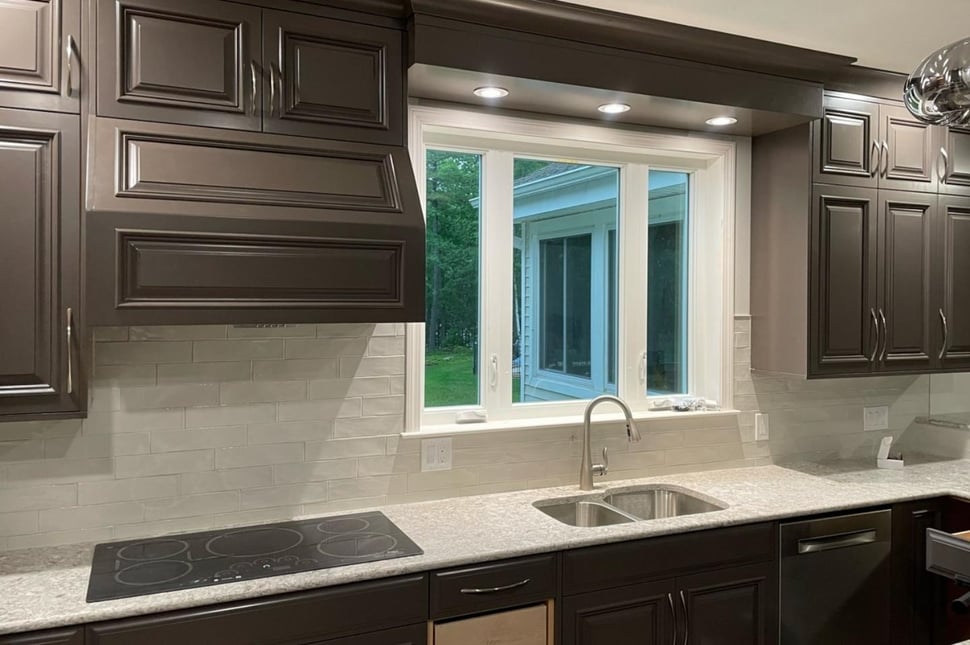4 Min Read
Kitchen Range Hood Ideas for 2024
As a central constant in our daily lives, modern kitchens evolve with the times, embracing innovations and aesthetic shifts alike. 2024 is seeing a renewed emphasis on the unsung hero of kitchen design: the range hood. Range hoods are an essential piece of equipment to ensure clean air and efficient ventilation. They also make a strong style statement when correctly curated. Your Seacoast New Hampshire kitchen remodel deserves a thoughtfully curated selection.
Table of Contents
- Understanding Range Hood Sizes And Their Importance
- Available CFM Range In Residential Range Hoods
- Optimal Height For Range Hoods
- Range Hood Height Factors To Consider
- Range Hood Cost Considerations
- Exploring Material Options For Range Hoods
- Key Features To Look For In A Range Hood
Understanding Range Hood Sizes and Their Importance
Size Matters: Matching Your Range to Your Hood
The size of your range plays a pivotal role in dictating the size of your range hood. When your hood extends across the entire width of your cooking range, it effectively captures the rising heat, smoke, and odors, preventing them from dispersing into other kitchen areas. When frying up some bacon or searing a steak, you'll want every bit of that airborne grease contained and expelled.
CFM: The Power Behind Effective Ventilation
CFM, or Cubic Feet per Minute, indicates the volume of air the range hood can move. It's a significant factor to consider as it determines how efficiently the hood can manage the byproducts of your culinary adventures. A higher CFM rating means more air gets extracted in a minute, making it especially beneficial for those who indulge in heavy-duty cooking or use larger stovetops. For kitchens where more aromatic or smoke-producing dishes are the norm, investing in a range hood with a robust CFM can be a game-changer.
Available CFM Range in Residential Range Hoods
- Under 250 CFM: These are typically found in apartment-grade models or over-the-range microwave hoods. They're best suited for small kitchens or cooktops with low heat output.
- 250 to 400 CFM: This range suits average-sized kitchens and people who do moderate cooking. It's appropriate for most standard cooktops.
- 400 to 600 CFM: These are more powerful units that are suitable for larger kitchens or for gas ranges with higher BTU outputs. If you frequently fry, grill, or cook with oils, this range effectively eliminates smoke and odors.
- Over 600 CFM: These are high-performance hoods ideal for gourmet kitchens, professional-grade ranges, or if you often cook with multiple pots and pans. They offer the best ventilation and smoke clearance.
Optimal Height for Range Hoods
- Electric Cooktops/Stoves: Typically, the bottom of the range hood should be 20 to 24 inches above the cooktop.
- Gas Cooktops/Stoves: Given that gas cooktops generate more heat and potentially harmful combustion byproducts, it's recommended that the hood be positioned slightly closer, between 24 to 30 inches above the cooktop.
Always check the manufacturer's recommendations. Some high-performance hoods with powerful blowers may have a broader range, allowing them to be installed higher without compromising effectiveness.
Range Hood Height Factors to Consider
- Efficiency: The closer the hood is to the cooktop, the more effectively it will capture steam, smoke, and odors. However, if it's too close, it can be a fire hazard or an obstruction.
- Visibility: If installed too low, the hood can obstruct the view of the rear burners, making cooking cumbersome.
- Safety: Ensure the hood is not at a height where one might bump their head. It's especially vital in homes with taller individuals.
- Cooktop Heat Output: For cooktops with high BTU burners or grills, you might need to consider a hood closer to the high end of the recommended range.
- Hood Design and Power: Some high CFM hoods are designed to work efficiently even when installed at a greater height from the cooktop.
Pro Tips
- For island range hoods (those not mounted against a wall), you might need to consider a slightly lower installation height for maximum effectiveness, as they have to capture rising smoke and steam without the aid of a wall to funnel the contaminants.
- The ducting, especially for ducted hoods, should be considered in advance. The shorter and straighter the ductwork, the more efficient the hood will be.
- Before finalizing the height, it might be beneficial to mock up the hood's position (using its cardboard box or a template) to visualize its placement and ensure it feels right in the space.

Range Hood Cost Considerations
The spectrum of range hood costs can range (see what we did there?) from a modest $1,000 to an upscale $8,000, influenced by factors like size, design, and materials. Stainless steel hoods typically offer affordability and durability, while luxury choices like copper or mixed wood designs command higher prices. Adding other features, such as advanced lighting or smart integrations, can further elevate costs.
Interested in further exploring the cost of a kitchen remodel in our area? We break it down here.
Exploring Material Options for Range Hoods
The materials you choose for your range hood can dramatically impact aesthetics and your experience. Different materials bring distinct visual appeals and offer varying degrees of durability and maintenance requirements.
Stainless Steel
- Aesthetics: Offers a sleek, modern, and professional appearance.
- Benefits: Highly durable, resistant to heat and stains, and easy to clean.
Glass
- Aesthetics: Provides a contemporary touch, often combined with other materials for a sophisticated look.
- Benefits: Allows for a lighter visual footprint and easy wipe-down, though might require frequent cleaning to maintain clarity.
Copper
- Aesthetics: Imparts a rich, warm hue, often associated with luxury or vintage-inspired kitchens.
- Benefits: Antibacterial properties, naturally tarnishing over time to provide a beautiful patina, though it might need occasional polishing.
Mixed Natural and Painted Wood
-
- Aesthetics: Combines the earthiness of natural wood with the versatility of paint, suitable for both rustic and modern kitchen designs.
- Benefits: Offers flexibility in design and color choices but requires regular maintenance to protect from moisture and heat.

Key Features to Look for in a Range Hood
To help you find the best fit for your space and cooking habits, here are some essential features we’ve yet to discuss.
Filter Quality
-
- Why It Matters: Filters trap grease, smoke, and other particles. The better the filter, the cleaner your air.
- Tip: Look for range hoods with easy-to-clean or replaceable filters, and consider types like baffle or mesh, depending on your cooking habits.
Noise Levels
-
- Why It Matters: While all range hoods produce some noise level, some can be notably quieter than others.
- Tip: Consider hoods with a sone rating; the lower the sone, the quieter the operation.
Ventilation Options (Ducted vs. Ductless)
-
- Why It Matters: As discussed, ducted hoods vent outside and handle moisture better, while ductless ones recirculate the air.
- Tip: Because they result in better air quality and moisture control, we only install ducted options.
Lighting
-
- Why It Matters: Proper lighting aids cooking, especially in the evening.
- Tip: Look for adjustable LED lights for energy efficiency and better visibility.
Adjustable Fan Speeds
-
- Why It Matters: Different cooking tasks might need different ventilation strengths.
- Tip: Multiple fan settings offer flexibility in handling varying amounts of smoke and steam.
Design and Aesthetics
-
- Why It Matters: Your range hood should complement your kitchen's overall design.
- Tip: From modern range hood styles to the charm of a reclaimed wood range hood, consider design alongside other features.

Excited about reinventing your kitchen with the latest in range hood designs? Let Oxland Builders guide your vision to reality. With expertise and a passion for excellence, we're here to transform your kitchen aspirations into tangible masterpieces. Get in touch today!






